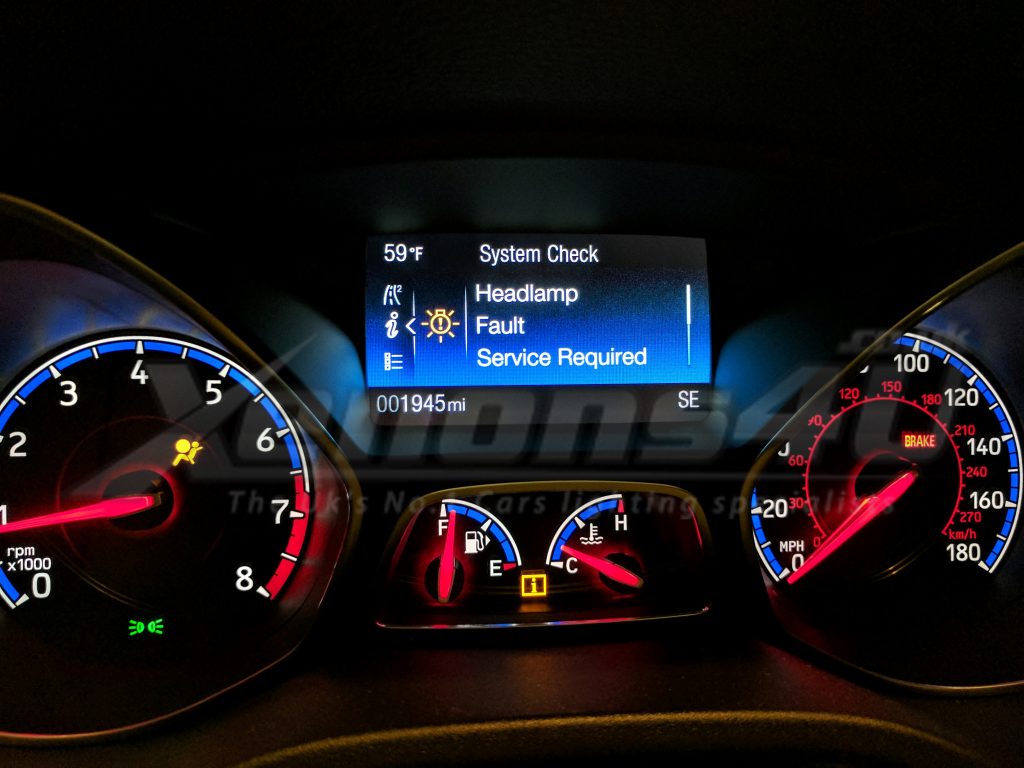In contrast to traditional tungsten and halogen bulbs that relied on super heated filament for illumination, HID bulbs uses a lighting technology which requires no filament. HID bulbs are filled with xenon gas that is excited between high-voltage electrodes to produce light. That’s why HID headlights are also often known as xenon headlights. With the flick of headlight switch, xenon gas turns into white-hot plasma light in seconds and produce much brighter light than halogen bulbs. This powerful light makes distant street reflectors and signs highly visible to the driver especially during night. Bright HID beam is much focused and reduces glare to opposing traffic.

Early HID headlights were only used for the low beam, with a halogen bulb reserved for high beam use but as the reflector technology improved, "bi-xenon" headlights (offering both a "low" and "high" HID beam) are offered on many vehicles today. Now most of the new vehicles such as Ford, Audi, BMW, Cadillac, DaimlerChrysler, GMC, Honda, Jaguar, Lexus, Lincoln, Mercedes, Mitsubishi, Nissan, Porsche, Toyota and Volkswagen, Volvo are coming with HID headlights as a standard component and most of them have beam-leveling control, dropping and raising according to vehicle load and angle, to further prevent glare to other users on the road.
No doubt, HID headlights is an active safety feature with an expected lifespan of 3,000 hours, many consider HID headlights a “lifetime” bulb that never needs to be replaced. However, this is an electronic component and it may fail. And when it fails your dashboard warns you through a message “Headlamp Fault Error- Service Required”. This error message is usually accompanied with an error sign as well which signifies it as a bulb pointing downwards with “!” on it.
What does this error mean?
This is a common issue for many Ford owners and it simply means that your HID bulb has gone out of function and not performing well. Now, it could be due to HID bulb has completed its life and needs replacement with a new xenon bulb or HID ballast which is xenon’s control unit has failed. However, it is very rare that both of these parts will fail together.
Diagnosis of failing part
Before attempting to replace the faulty equipment, it is necessary to identify actually which part is at fault, if it is bulb, ballast or something else in the headlight itself causing this issue. To fairly diagnose, first check the side (right or left) for which you are receiving error message. Mostly this error happens to only one side and it is the left side commonly.
A simple swap of HID bulb and ballast from right side to the left side would help to check if the error message gone or not. Just make this swap and go to the dashboard to check if error changes from “left side to right side” or vice versa. If it changes then you know that problem is either with the bulb or ballast.
Now work in isolation with both. First, start with the easiest method of HID bulb gas discharge detection. Check for the color of HID bulb. If the gas in bulb has tuned into dark black color in the middle; it means it has completed its life and hence failed. Note to be as a precaution, if the bulb is still in working condition and purple light emitting from it also signifies it is going to complete its life soon and will need a replacement. In these cases buying a new HID bulb and replacing it with a new one fixes both this lighting issue and warning message on your vehicle.
But what if you find that bulb is in perfect condition. Well, it’s time to troubleshoot for the reasons that might have harmed HID ballasts. If you have flickering headlights with an occasional on/off and completely going OFF after that or buzzing with a sound or changing light colors are a clear sign that problem is with the HID ballast and not bulb. You may also notice that if this problem occurs only during the cold weather or at first start up because condensation can cause ballast to fail.
Fixing the Error
Once, you gain the knowledge of which part is at fault, it is necessary that you take action immediately preventing other potential losses in your vehicle. If it is a bulb, then replacing a bad bulb with a new one will fix this issue on your vehicle but if it is HID ballast then simply replacing ballast is not recommended. Its recommended that if you’ve had bad ballast for a while, then sooner or later you will need new bulbs too so doing it all at once and change both the bulb and ballast will save you time and probably the cost as well. Replacing HID ballast immediately is necessary because these parts aren’t serviceable and if not replaced on time, it will run through the bulb and you cannot enjoy the real strength of HID bulb.
In addition to the warning messages you can run OBD-2 diagnostic, it will usually show up with diagnostic trouble codes DTC related to headlamp's, B1D00-15 Low beam (left) or B1D01-15 Low beam (right).
Not having the headlamps working up to the mark may make your vehicle illegitimate on the road as these headlights serve as a safety feature for you and others on the road and when you do not make timely replacements, your car will not be road legal until you replace them with new bulb or HID ballast and headlamps start working perfectly fine.
If you are tech savvy you can attempt to make these replacements on your own, but replacement may require the same coding so either use VAG-COM or take your car to the dealer such as xenons4u. Consulting a dealer will save much effort on you. You can purchase parts, get them replaced and coded with greater ease.


